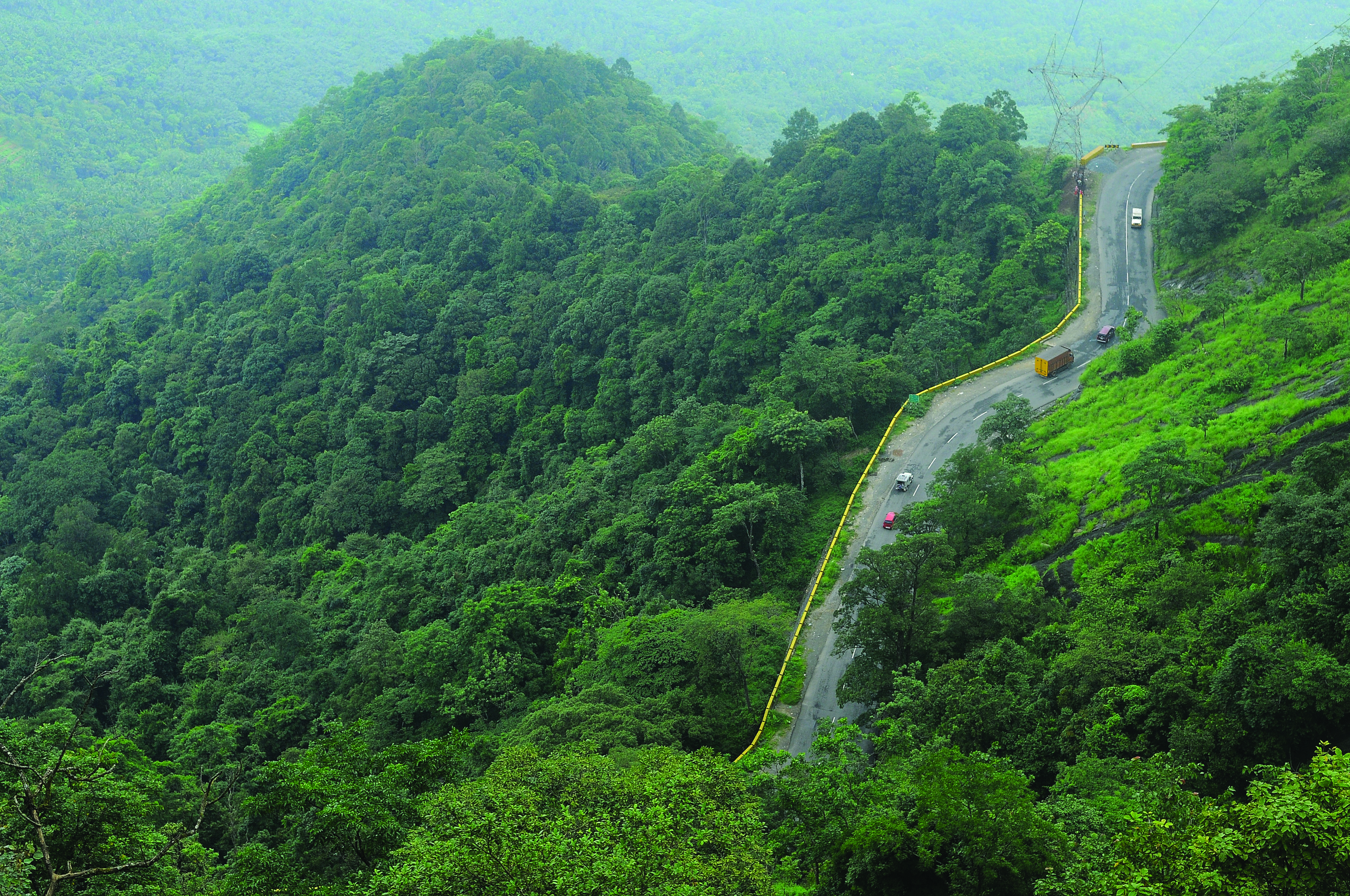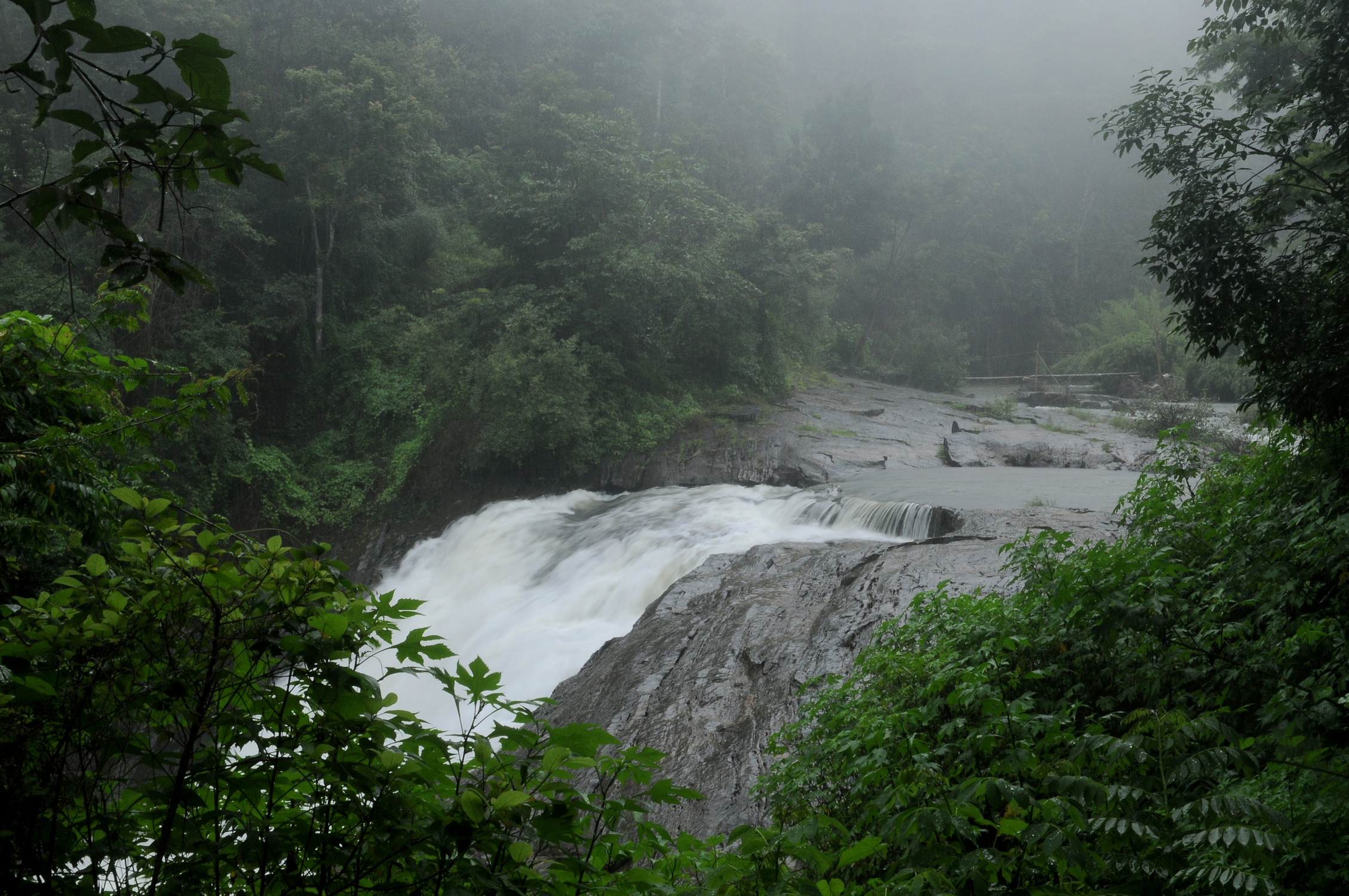Journey to Kanthanpara – A Hidden Waterfall in Wayanad
I had been longing for a trip to somewhere peaceful, away from the usual crowds and noise. That’s when my friend Sajith mentioned a waterfall near the Ripon Estate, not far from a relative’s house in Vaduvanchal, Wayanad. That was all the push I needed—I decided, why not go there?
The drive to Wayanad via the Thamarassery Churam is one of my all-time favorites. As you climb the ghat road, lush forests and rolling hills stretch out on both sides. Midway up the churam, the crisp air and sudden mist welcome you like an old friend. Playful monkeys line the roadside, sometimes squabbling, sometimes just watching passersby like amused spectators.

Image Credit: Department of Tourism, Govt of Kerala
A picturesque view of Thamarassery Ghat Road .
By the time we pass Lakkidi, the sky turns broody with thick clouds, and even at noon, there’s a pleasant chill in the air. That familiar Wayanadan cold always brings back memories of my first real experience with it—over 30 years ago.
Back then, I had accompanied my cousin Anil to Vaduvanchal because our Valiyamma was seriously ill. She passed away around one in the night. We had to walk over to Satyettan’s house nearby to inform him—back in those days, we didn’t have mobile phones, or even landlines in that area. Anil and I stepped out into the night, wrapped in layers but still freezing. The cold clung to us like a second skin, so biting that even walking was hard. Somehow, we made it, and that night etched itself deep into memory.
Since then, I’ve been to Wayanad many times—even worked for about six months at Meenangadi Polytechnic College—but never again felt that same intense cold. Maybe it's the concrete that’s slowly replaced the forests.
The first landmark after crossing the churam is the Chain Tree, a memorial for Karinthandan, a tribal man who helped the British discover the route. Legend has it that he was killed to erase his contribution, and that his spirit caused accidents on that stretch of road. Eventually, rituals were performed to pacify his soul, and now the tree stands there with chains around it. I’ve written more about this story in another blog post — read it here.
Soon after, we reach Vythiri, the first bustling town after the churam. Despite the rush, it has a certain charm—cool air, mist-drenched streets, and the scent of spices. We stopped at Chundale for breakfast—hot tea, soft idlis, and spicy sambar. There’s something magical about sipping tea in the mountain chill with the morning sun just warming your face.
At Chundale, the road splits in two. The left fork goes toward Kalpetta, Meenangadi, and on to Mananthavady and Thirunelli Temple. Both routes eventually lead into Karnataka. But we took the right turn—towards Meppadi, Vaduvanchal, and further toward Gudalur and Ooty.
Meppadi itself is breathtaking—rolling hills blanketed with tea estates, all glowing green in the morning light. Nearby is the more popular Soochipara Waterfall, but we were headed to its quieter cousin—Kanthanpara Waterfall.
The road from the Ripon Estate junction to Kanthanpara narrows further, almost like a quiet path forgotten by time. On either side, dense greenery leans in, the tea bushes giving way to wilder plants, tall trees, and creepers. It’s a road that makes you slow down—not just because of its size, but because everything around you urges you to take it all in.
Soon, the sound of flowing water reaches your ears—gentle, steady, and close. A short walk through a patch of woods brings you face-to-face with the waterfall. Kanthanpara appears suddenly, like a secret finally shared.

Image Credit: Department of Tourism, Govt of Kerala
Kanthan Para Falls, near Meppadi Wayanad.
Water spills over smooth dark rocks in elegant tiers—not thunderous, but calm and mesmerizing. Around it, thick foliage forms a natural curtain, letting only slivers of sunlight through. The whole place feels untouched, as if nature keeps it hidden on purpose.
There are no crowds here. In fact, apart from one or two other visitors, we had the entire place to ourselves. And that’s what makes Kanthanpara truly special. It isn’t just the waterfall—it’s the silence, the soft breeze, the light mist, the freedom to sit on a rock and just listen.
The large stones near the fall are perfect for resting your feet in the cool stream. You can sit for hours, watching the water weave its way around them, feeling the soft spray on your face. No shouting, no plastic litter, no push for selfies. Just peace.
In a district full of popular tourist spots, Kanthanpara Waterfalls stands out by staying quiet. It doesn’t try to impress you—it simply offers you a moment of stillness, if you’re willing to pause.
And for me, that quiet—that rare, golden silence—is what made the trip unforgettable.